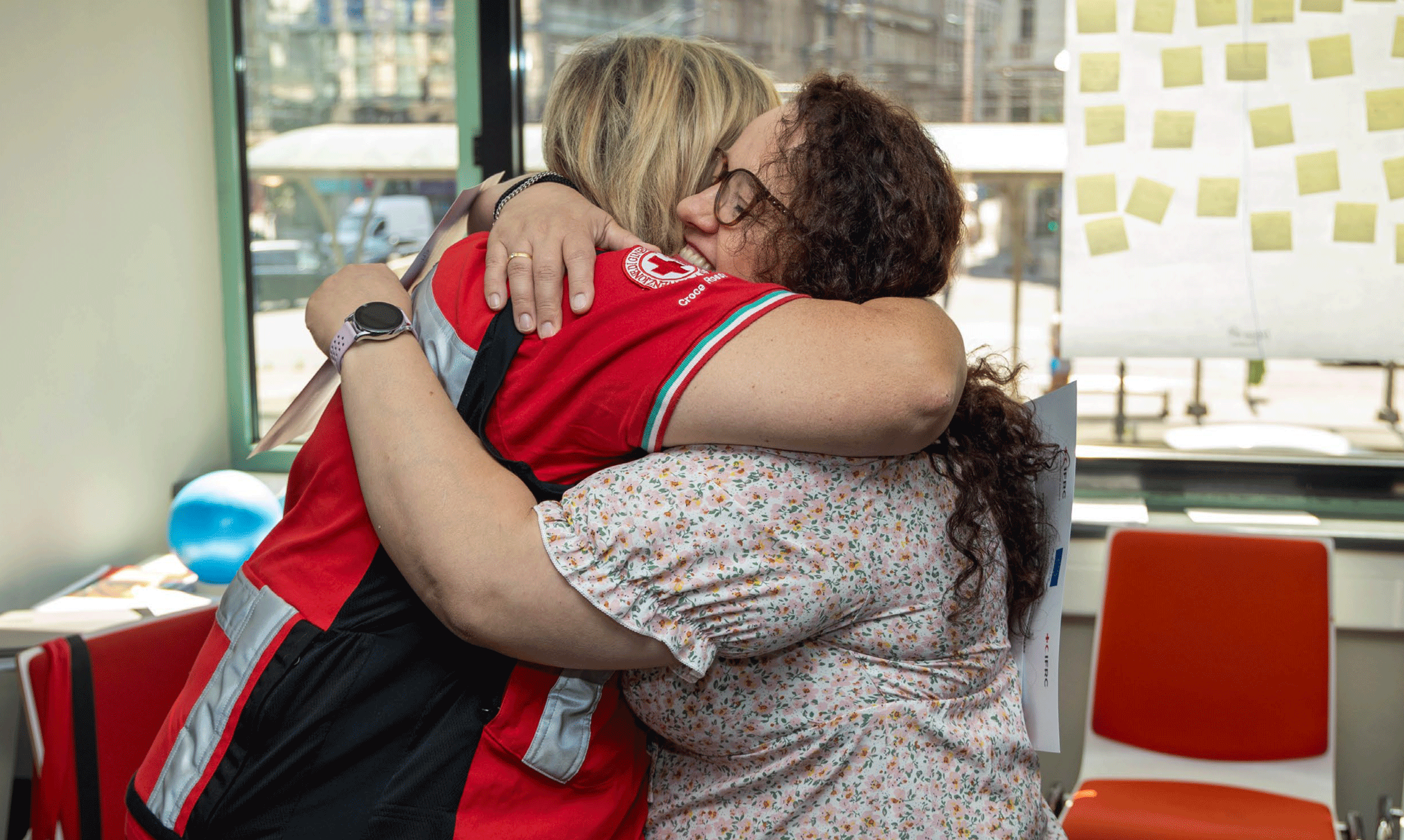A theory of change for psychosocial wellbeing
I worked as a consultant for the IFRC Psychosocial Centre to design a visual representation of their Theory of Change, with the aim of increasing accessibility and understanding of their core mandate – impacting the mental health and psychosocial wellbeing of communities, staff and volunteers around the world.
My Role
Consultation
Graphic Design
Visual Storytelling
Client
International Federation of Red Cross and Red Crescent Societies Reference Centre for Psychosocial Support (IFRC PS Centre)
“I really enjoyed working with Sarah – her ability to consult and provide guidance ensured that the process went very smoothly. I was impressed by how quickly she was able to present a graphic solution that summarised a long process of internal discussions.”
– Anna Tarsetti, Project Manager, IFRC PS Centre
Final Theory of Change design
Project background
The International Federation of the Red Cross and Red Crescent Societies (IFRC) is the world’s largest humanitarian network. They support 150 million people every year through 16 million volunteers and 191 National Societies around the world. Whilst the PS Centre is not a frontline organisation, it plays a vital role in supporting, guiding and ensuring that National Societies have the capacity to provide mental health and psychosocial support for their communities, staff and volunteers.
©PS Centre
The challenge
Simplifying complexity
The complex, important work the IFRC Psychosocial Centre does behind the scenes to support National Societies in their work improving psychosocial wellbeing and mental health for millions of people around the world can be difficult to understand. This has sometimes resulted in poor understanding of their services, affecting the uptake and impact of their work with National Societies, stakeholders, partners and donors.
They needed to find an accessible, informative and visually engaging way to tell their organisational story and communicate their mission, strategic operational approaches and priorities. My role was to work as a consultant to create a visual representation of their Theory of Change.
Project kickoff
The project began with a meeting to fully understand the task and discover where the client was in their Theory of Change journey.
Whilst the PS Centre had done a significant amount of theoretical work, they needed help identifying relevant content to include, as well as mapping, simplifying and synthesising their content into a narrative suitable for visual representation.
The initial steps I took in this process involved:
understanding Theory of Change models, content structures and approaches
analysing and understanding effective ways to visually represent a Theory of Change
understanding the client narrative and stylistic preferences
understand IFRC Psychosocial Centre’s framework, approach, content and Strategic Plan
My self-directed research led me to an insightful and in-depth resource on the Theory of Change creation process (thanks to think tank NPC), from which I was able to investigate different approaches and then find and distil a suitable model.
I then consulted the client about the content structure, and so we could agree on elements important to their narrative in addition to their Theory of Change (such as the contextual inclusion of global emergencies and growing need for their work).

©Benoit Matsha-Carpentier / IFRC
Content wireframe
My first ah-ha moment
When the client provided their initial first copy draft based on this discussion, I had an ah-ha moment (thanks to my preliminary research understanding ToC models) when I realised that their activities and outcomes had been drafted together in a single text and were not separated. Sorting, dividing and reordering these simplified the content, and was a big step towards mapping out a wireframe.
I then began sketching different ways to organise content on the page, making it obvious that a horizontal ‘Logic Model’ Theory of Change format was the most suitable approach.
Building the visual narrative
Another ah-ha moment
To tell an effective story, I also needed to weave a visual narrative through the content. Despite the complexity of the subject matter, several visual metaphors had popped up in discussions describing both IFRC’s PS Cenre’s services and inherent global nature, which acted as a springboard for the graphic design.
Once all these elements were on a page together, I had another ah-ha moment when I could see the three-tiered strategic approach content alongside the section blocks that make up the Red Cross symbol.
This served as a crucial foundation for the rest of the design, seamlessly aligning with the protective curve of the Red Crescent icon to house the IFRC Psychosocial Centre’s vision.
Refinement
Visualising humanity
As a humanitarian network, it was important to also keep people at the heart of the cause and include them in the visual storytelling. Illustration was a logical method to achieve this, effectively representing the global nature of the IFRC PS Centre’s work. It also provided context for emergencies and mental health, symbolised by the use of dark and light elements and a torch.
The design was refined and iterated several more times after being shared and tested with various stakeholders. The illustrations were tweaked to be clearer, to improve brand recognition by including uniforms, and to increase the representation of diversity before the final version.
“Sarah has created a powerful visual tool to explain our mission, approach and the support we provide, resulting in enhanced accessibility and understanding of our work – which impacts the psychosocial wellbeing of many communities, staff and volunteers around the world.”
– Anna Tarsetti, Project Manager, IFRC PS Centre

©PS Centre









